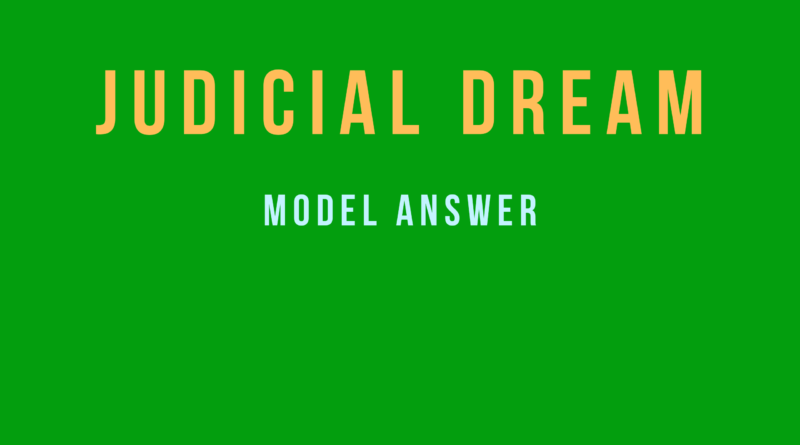JOINT HINDU FAMILY
Explain the concept of Joint Hindu Family and its basic characteristics.
In India, there are two schools which govern the concept of Hindu Undivided family or Joint Hindu family and these are:-
• Mitakshara School
• Dayabhaga School
All Hindu undivided families or Joint Hindu families in India except State of Bengal and Assam are governed by Mitakshara School and in the State of Bengal and Assam, they are governed by Dayabhaga School.
According to the Mitakshara School, for bringing a Joint family into existence, there is a need of Common male ancestor and joint property with respect to the family. But these things are essential for establishing Joint Hindu family and if after establishment, the common male ancestor dies or the joint family property extinguishes, then also family will be remained Joint Hindu family until the partition has done.
In the leading case of Rukhmabai vs Laxminarayan (AIR 1960 SC 335), The Supreme Court held that, “The normal state of every Hindu family is that it is a joint family, presumably joint in food, worship and estate and it continues to be joint. However, if a family is not joint in food, worship and estate or in any one or all of them, it does not necessarily imply that it has ceased to be a joint family.” According to this judgment, if there is an arrangement in family but no partition regarding food, worship or shelter has occurred, then also family will continue to be Joint Hindu family.
According to Mitakshara School, Joint Hindu family is a creation of law. It cannot be created by the act of members or by an agreement between parties. It has no separate legal entity and it is not a juristic person.
Joint Hindu family under Mitakshara school consists of male members, female members like daughters, wife, windows, deserted wives and deserted married daughter up to any degree. Under this family, deserted married daughter has a right of maintenance only because in reality she is a member of a joint Hindu family of her husband. In joint Hindu family, if all the male members die then also it will remain joint Hindu family and female members can get a male member included either by birth or adoption.
In the leading case of Krishna Prasad vs CIT, Bangalore ( AIR 1975 SC 498), The Supreme Court held that, “ A joint Hindu family can consist of a male Hindu and his wife. It may even consists of two female members. But there must be at least two members to constitute it. A joint family can never consist of single male or single female.
Property under joint Hindu family is a devolved upon members either by succession or survivorship. The concept of coparcenary is part of it but the main difference between Joint Hindu Family and Coparcenary is that, the coparcenary includes male members of joint Hindu family only up to fourth degree of relationship. On the other hand, joint Hindu family includes both male and female members up to any degree of relationship. But after the amendment of 2005 in Hindu Succession Act, females have been declared coparcener by the law. The purpose behind the amendment was not to disturb the concept of coparcenary or joint Hindu family but only for the betterment of women.
Joint Hindu family can be dissolved only by partition and after partition, new different joint Hindu families come into existence. There is always a presumption regarding existence of joint Hindu family and burden of proof that it has been dissolved is upon the party who claims that partition has occurred. This has been held in the leading case of State of Maharashtra vs Narayanrao Shamrao Deshmukh and others[(1985) 2 SCC 321].
Once the partition occurs then the Joint Hindu family extinguishes forever and it cannot be reconstituted again until the members of family prove beyond doubt that they are living together from a long duration. In such a situation the court always presume that partition has occurred and burden of proof is upon parties who claim that it has not occurred.



